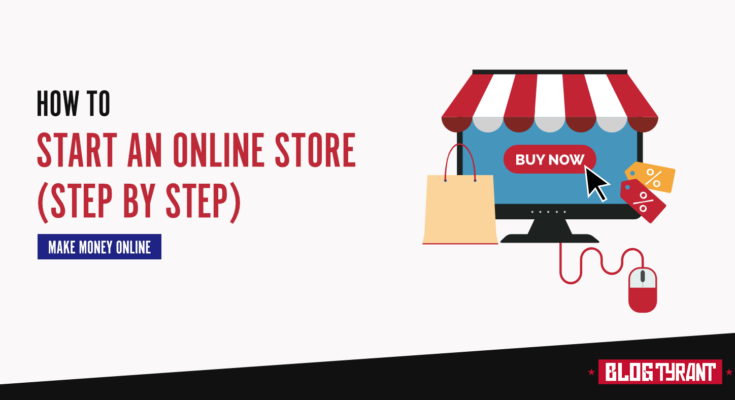In the rapidly evolving digital age, starting an online store is a lucrative opportunity for aspiring entrepreneurs. The ease of access to the internet and advancements in technology have made it easier than ever to set up an online business. Whether you’re looking to sell physical products, digital goods, or services, this comprehensive guide will provide you with all the necessary steps to start an online store and begin earning money.
Understanding the Online Store Landscape
Before diving into the practical steps, it’s crucial to understand the online store landscape. The e-commerce industry is booming, with billions of dollars in sales generated each year. Knowing the market trends, identifying your target audience, and understanding the competition will give you a competitive edge.
Market Research and Niche Selection
Choosing the right niche is pivotal. Conduct thorough market research to identify gaps in the market and select a niche that aligns with your passion and expertise. Tools like Google Trends, Keyword Planner, and competitor analysis can help you pinpoint profitable niches.
Target Audience Analysis
Understanding your target audience is essential. Create detailed customer personas to understand their preferences, behaviors, and purchasing patterns. This knowledge will guide your product selection, marketing strategies, and customer engagement efforts.
Setting Up Your Online Store
Choosing the Right E-commerce Platform
Selecting the right e-commerce platform is critical for your online store’s success. Popular platforms like Shopify, WooCommerce, and BigCommerce offer various features and integrations to help you build a robust online store. Consider factors such as ease of use, customization options, scalability, and cost when making your decision.
Domain Name and Hosting
Your domain name is your store’s online identity. Choose a name that is memorable, relevant to your niche, and easy to spell. Once you have a domain name, you’ll need reliable hosting to ensure your store is always accessible. Hosting providers like Bluehost, SiteGround, and HostGator offer excellent services for online stores.
Designing Your Online Store
The design of your online store plays a crucial role in attracting and retaining customers. A user-friendly, visually appealing design enhances the shopping experience and encourages conversions. Use high-quality images, clear navigation, and compelling call-to-action buttons. Ensure your store is mobile-responsive, as a significant portion of online shopping occurs on mobile devices.
Product Selection and Inventory Management
Sourcing Products
Deciding what to sell is one of the most critical steps. You can source products through various means, such as dropshipping, wholesale, or manufacturing your own products. Dropshipping allows you to sell products without holding inventory, while wholesale and manufacturing require upfront investment but offer higher control over quality and branding.
Inventory Management
Efficient inventory management ensures you can meet customer demands without overstocking. Use inventory management software to track stock levels, manage orders, and forecast demand. This will help you maintain optimal inventory levels and avoid stockouts or excess inventory.
Setting Up Payment Gateways and Shipping Options
Payment Gateways
To accept payments online, you’ll need a reliable payment gateway. Popular options include PayPal, Stripe, and Square. Ensure the payment gateway you choose supports various payment methods, including credit/debit cards, digital wallets, and bank transfers.
Shipping Options
Offering multiple shipping options can enhance the customer experience. Provide a range of shipping methods, such as standard, express, and international shipping. Partner with reputable shipping carriers to ensure timely and safe delivery of products. Clearly communicate shipping policies, including costs and delivery times, to customers.
Creating High-Quality Product Listings
Product Descriptions
Crafting compelling product descriptions is essential for converting visitors into buyers. Highlight the features, benefits, and unique selling points of each product. Use persuasive language and include relevant keywords to improve search engine visibility.
Product Images and Videos
High-quality product images and videos significantly impact purchasing decisions. Use professional photos that showcase the product from various angles. Consider creating demonstration videos to provide a more comprehensive view of the product.
Implementing Effective Marketing Strategies
Search Engine Optimization (SEO)
Optimizing your online store for search engines is crucial for driving organic traffic. Conduct keyword research to identify relevant terms and incorporate them into your product titles, descriptions, and meta tags. Focus on creating high-quality content, such as blog posts and guides, to attract and engage your target audience.
Social Media Marketing
Leverage social media platforms to promote your products and engage with your audience. Create profiles on popular platforms like Facebook, Instagram, and Twitter. Share compelling content, run targeted ads, and interact with followers to build a loyal customer base.
Email Marketing
Building an email list allows you to connect with potential and existing customers directly. Use email marketing to share updates, promotions, and personalized recommendations. Tools like Mailchimp and Constant Contact can help you create and manage effective email campaigns.
Pay-Per-Click (PPC) Advertising
PPC advertising is a powerful way to drive targeted traffic to your online store. Platforms like Google Ads and Facebook Ads allow you to create campaigns that reach potential customers based on their search queries, interests, and demographics. Monitor and optimize your campaigns to maximize return on investment.
Providing Excellent Customer Service
Customer Support
Offering exceptional customer support is vital for building trust and loyalty. Provide multiple support channels, such as live chat, email, and phone support. Respond promptly to customer inquiries and resolve issues efficiently.
Customer Reviews and Testimonials
Encourage satisfied customers to leave reviews and testimonials. Positive feedback enhances your store’s credibility and influences potential buyers. Display reviews prominently on your website and address any negative feedback constructively.
Analyzing and Improving Performance
Analytics and Reporting
Regularly monitor your online store’s performance metrics using tools like Google Analytics. Track key indicators such as traffic, conversion rates, and average order value. Analyzing this data will help you identify areas for improvement and optimize your strategies.
A/B Testing
Conduct A/B testing to compare different elements of your website, such as headlines, images, and call-to-action buttons. This helps you determine what resonates best with your audience and improves your store’s overall performance.
Scaling Your Online Store
Expanding Product Range
As your store grows, consider expanding your product range. Introduce new products that complement your existing offerings and cater to your customers’ needs. Continuously seek feedback from customers to identify potential product ideas.
Exploring New Markets
Exploring new markets can significantly boost your sales. Consider targeting international customers by offering multilingual support and accepting multiple currencies. Research market demands and tailor your marketing strategies to each new market.
Automating Operations
Automating various business operations can save time and improve efficiency. Use automation tools for tasks such as inventory management, order processing, and customer communication. This allows you to focus on strategic activities that drive growth.
By following these comprehensive steps, you can successfully start an online store and earn money. Stay committed, adapt to changing market trends, and continually strive to improve your store’s performance.



